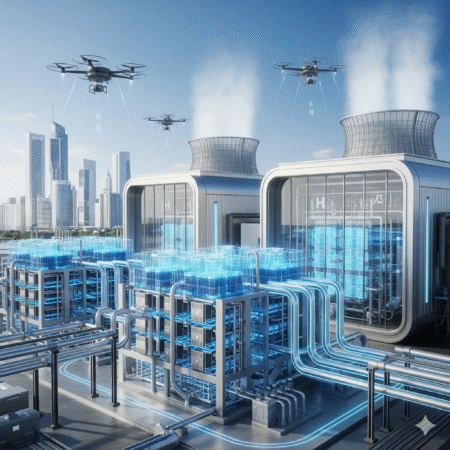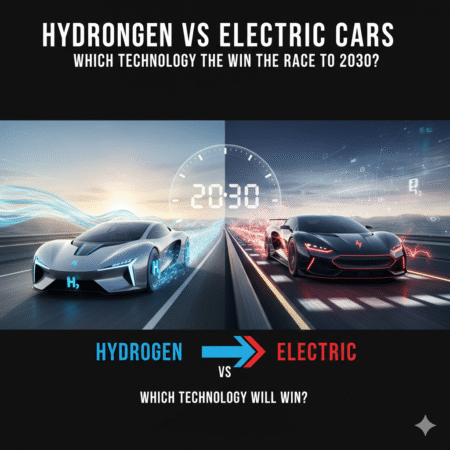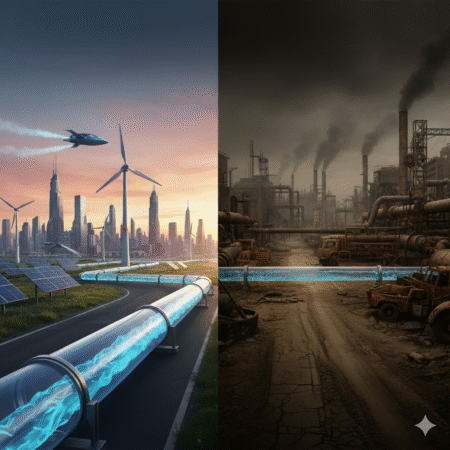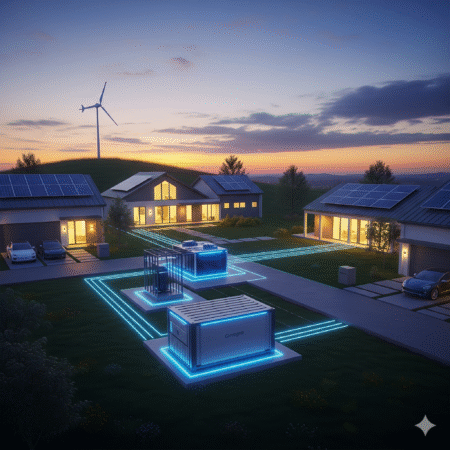
- What Is Hydrogen Technology and Why It Matters
- The Big Question – Why Is Everyone Talking About Hydrogen
- Key Technologies for Hydrogen Production
- How Hydrogen Energy Actually Works
- Why Hydrogen Is a Clean Energy Game-Changer
- The Tech Behind Hydrogen Fuel Cells
- How Hydrogen Is Stored and Transported
- Industrial Use Cases That Make Hydrogen Essential
- Why the World Is Betting Big on Hydrogen
- The Road Ahead: Challenges and Opportunities
- FAQ, Conclusion, and Call-to-Action
What Is Hydrogen Technology and Why It Matters
Let’s start from the very beginning – what exactly is hydrogen technology?
Hydrogen (H₂) is the lightest, most abundant element in the universe. On its own, it’s just a colorless, odorless gas. But when engineers talk about “hydrogen technology,” they’re referring to the entire system of producing, storing, transporting, and using hydrogen as an energy carrier.
This isn’t just a cool science experiment. It’s a serious energy game-changer. Why? Because hydrogen can power heavy industries, vehicles, and even entire power grids – all while producing zero emissions at the point of use (its only byproduct is water vapor 💧).
The Basics: How We Produce Hydrogen
Right now, there are a few major ways we make hydrogen:
- Steam Methane Reforming (SMR)
The most common (and cheapest) method today. It uses natural gas to produce hydrogen – but it also emits a lot of CO₂. This is what we call grey hydrogen. - Electrolysis
This is the clean-tech darling. We use electricity to split water (H₂O) into hydrogen and oxygen. If that electricity comes from solar or wind, you get green hydrogen – completely zero-carbon. - Blue Hydrogen
This is basically SMR + carbon capture technology. We still use natural gas, but we trap most of the CO₂ before it reaches the atmosphere.
Think of these like the “production recipes” for hydrogen. Some are clean, some are dirty, but they all get you the same energy-rich H₂.
How Hydrogen Powers Things
Once you have hydrogen, you can use it in fuel cells – devices that combine hydrogen and oxygen to produce electricity. No combustion, no pollution – just clean power and water vapor.
It’s like a battery you refill with gas instead of plugging in. That’s why companies are racing to build hydrogen fuel cell trucks, ships, trains, and even planes.
Why It Matters
Hydrogen solves a few big problems at once:
- It can store renewable energy (wind/solar) for when the sun isn’t shining or the wind isn’t blowing
- It can power industries that are hard to electrify, like steelmaking or cement
- It produces zero emissions at the point of use, helping companies hit net-zero targets
So when people say hydrogen might be “the new oil,” they mean it could become the main energy backbone for the clean economy.
The Big Question – Why Is Everyone Talking About Hydrogen
Here’s the thing: hydrogen isn’t new. Scientists have known about it for centuries.
So why is everyone suddenly obsessed with hydrogen now? 🌍
Because the world is in the middle of a massive energy shift – moving from fossil fuels to clean power – and hydrogen fits perfectly into the puzzle pieces that are currently missing.
Climate Pressure Is Real
Governments around the world have made bold climate pledges. The EU wants to be climate-neutral by 2050. The U.S. is pouring billions into clean energy.
But here’s the problem: you can’t decarbonize heavy industries like steel, cement, shipping, or aviation with just solar panels and batteries. They need huge amounts of power, and they can’t afford downtime.
Hydrogen gives them a way out – it’s clean and powerful.
Storage + Flexibility = Energy Freedom
Renewables like solar and wind are amazing, but they’re also unpredictable. Some days you have too much energy, other days not enough.
Hydrogen acts like a giant energy battery.
Excess solar or wind power can be used to make hydrogen (via electrolysis). Then, that hydrogen can be stored for weeks or months, and turned back into electricity later when demand spikes.
This is why energy planners love hydrogen – it solves the intermittency problem.
Industrial Giants Smell Opportunity
Big players like Shell, Toyota, and Siemens aren’t betting on hydrogen just because it’s green. They see a trillion-dollar market forming.
Think pipelines, storage hubs, fuel-cell vehicles, hydrogen-ready turbines – a whole new industrial ecosystem.
And early movers are hoping to own the infrastructure the way oil companies dominated pipelines and refineries for the last century.
Hype + Reality Are Colliding
There’s a lot of hype, sure. But there’s also real money, real projects, and real deadlines.
Countries are launching national hydrogen strategies. Companies are building hydrogen gigafactories.
And for the first time, the technology is starting to scale.
That’s why everyone from politicians to CEOs is talking about hydrogen – because this isn’t just a climate solution anymore. It’s an economic revolution in the making.
Key Technologies for Hydrogen Production
Hydrogen can be produced using several different technologies, each with its own advantages, challenges, and maturity levels. Understanding these production pathways is essential for evaluating hydrogen’s role in the future energy mix and its potential environmental impact. The main categories are gray, blue, green, turquoise, and pink hydrogen, differentiated primarily by their energy source and carbon footprint.
Overview of Hydrogen Production Pathways
| Type of Hydrogen | Feedstock | Energy Source | |||
|---|---|---|---|---|---|
| Gray Hydrogen | Natural gas (methane) | Steam methane reforming (SMR) | |||
| Blue Hydrogen | Natural gas (methane) | SMR + Carbon Capture and Storage (CCS) | |||
| Green Hydrogen | Water | Renewable electricity (electrolysis) | |||
| Turquoise Hydrogen | Natural gas | Methane pyrolysis (solid carbon byproduct) | |||
| Pink Hydrogen | Water | Nuclear electricity (electrolysis) |
Steam Methane Reforming (SMR)
- Most widely used method today for producing hydrogen.
- Natural gas reacts with steam at high temperature (700–1,000 °C) to produce hydrogen and CO₂.
- Highly efficient but emits significant CO₂, which makes it unsustainable long-term without CCS.
Electrolysis
- Splits water (H₂O) into hydrogen (H₂) and oxygen (O₂) using electricity.
- When powered by renewables (wind, solar, hydro) it produces green hydrogen, a fully decarbonized option.
- Requires high amounts of electricity, so costs depend heavily on renewable power prices.
- Growing rapidly as renewable energy costs decline.
Methane Pyrolysis
- Uses thermal decomposition of methane into hydrogen and solid carbon.
- Produces minimal CO₂ and is often labeled turquoise hydrogen.
- Still in early development but promising for low-emission hydrogen.
Nuclear-Powered Electrolysis
- Uses heat and electricity from nuclear reactors to run electrolysis.
- Called pink hydrogen; it’s carbon-free and can operate continuously (baseload).
- Useful where nuclear capacity already exists.
Why Hydrogen Is Considered a Clean Energy Source
Hydrogen has been gaining massive attention as a potential cornerstone of the clean energy transition. One of the biggest reasons is its environmental profile: when hydrogen is used as a fuel, the only by-product is water vapor, making it one of the cleanest energy carriers available. But there’s more to it than just zero emissions at the point of use. Let’s break down why hydrogen is often seen as a game-changer in reducing greenhouse gas emissions and how it stacks up against other fuels.
Zero Emissions at Point of Use
Unlike fossil fuels such as coal or natural gas, hydrogen does not release carbon dioxide (CO₂), nitrogen oxides (NOₓ), or sulfur dioxide (SO₂) during combustion. Whether it’s powering a fuel cell vehicle, generating electricity, or heating industrial processes, hydrogen only produces H₂O (water vapor) as exhaust.
This characteristic makes hydrogen especially attractive for hard-to-decarbonize sectors, like heavy industries and long-haul transportation, where eliminating emissions is challenging with conventional electrification.
Versatile & Compatible With Renewable Energy
Hydrogen can be produced using renewable electricity via electrolysis, which splits water into hydrogen and oxygen. This method produces green hydrogen, which is virtually carbon-free. By pairing hydrogen production with solar, wind, or hydro power, we can store surplus renewable energy and then use it when demand spikes – solving one of the biggest problems of renewables: intermittency.
Enabler of Industrial Decarbonization
Industrial sectors like steel, cement, chemicals, and refining are among the largest carbon emitters globally. Hydrogen offers a way to replace carbon-intensive fuels and feedstocks in these processes. For example:
- Steelmaking can shift from coal-based blast furnaces to hydrogen-based direct reduction.
- Refineries can use clean hydrogen instead of grey hydrogen (from natural gas) to cut emissions from hydrogen-intensive processes.
Table: Comparing Hydrogen with Conventional Fossil Fuels
| Feature | Hydrogen (Green) | Natural Gas | Coal | Gasoline/Diesel |
|---|---|---|---|---|
| CO₂ Emissions at Use | 0 | High | Very High | High |
| By-Products | Water Vapor | CO₂, NOₓ | CO₂, SO₂, NOₓ | CO₂, NOₓ |
| Energy Density (by weight) | Very High (120 MJ/kg) | Medium (55 MJ/kg) | Low (25 MJ/kg) | High (45 MJ/kg) |
| Renewable-Compatible | Yes (via electrolysis) | No (fossil-based) | No | No |
| Storage & Transport | Moderate challenge | Easy | Easy | Easy |
Key Takeaway
Hydrogen stands out as a clean, flexible, and high-energy fuel that can replace fossil fuels in multiple sectors without emitting harmful pollutants. While storage and infrastructure challenges remain, its potential to drastically cut emissions – especially if produced from renewables – makes it a critical tool for global decarbonization.
How Hydrogen Energy Actually Works
To truly understand why hydrogen is generating so much buzz, we need to look at how it actually works as an energy system – from production to end use. While hydrogen might seem like just another fuel, its value lies in being a flexible energy carrier that can connect different parts of the energy ecosystem: power generation, storage, and consumption.
Let’s break it down step by step so even a newcomer can follow the full hydrogen energy cycle.
Step 1: Production
Hydrogen doesn’t exist freely in large amounts on Earth; it has to be extracted from compounds like water or hydrocarbons. The main methods are:
- Electrolysis
Uses electricity (preferably from renewable sources) to split water (H₂O) into hydrogen (H₂) and oxygen (O₂).
→ This produces green hydrogen with zero direct emissions. - Steam Methane Reforming (SMR)
Reacts natural gas (methane) with steam to release hydrogen.
→ This produces grey hydrogen, or blue hydrogen if combined with carbon capture and storage (CCS). - Other Methods
Such as biomass gasification or methane pyrolysis, which are being explored to further lower carbon footprints.
Step 2: Storage and Distribution
Once produced, hydrogen must be stored and transported before it can be used. This step is crucial because hydrogen is a light, small molecule that behaves very differently from conventional fuels.
- Compressed Gas (200–700 bar): Stored in high-pressure tanks, common for vehicles.
- Liquid Hydrogen (−253°C): Requires cryogenic tanks but allows higher energy density.
- Chemical Carriers (e.g. ammonia, LOHC): Hydrogen is bound to another substance and released later, useful for long-distance shipping.
Step 3: End-Use Applications
Hydrogen can be used in two major ways:
- Combustion: Burned as a fuel to produce heat or power, similar to natural gas but with water vapor as the byproduct.
- Fuel Cells: Devices that electrochemically convert hydrogen into electricity with water as the only emission. This is the cleanest and most efficient way to use hydrogen.
The Hydrogen Energy Cycle (Well-to-Wheel)
| Stage | Description | Key Output |
|---|---|---|
| Production | Electrolysis or SMR to create H₂ | Hydrogen gas |
| Storage | Compressed, liquefied, or chemically stored | Energy-dense hydrogen |
| Distribution | Transported via pipelines, ships, or trucks | Delivered fuel |
| Conversion | Fuel cells convert H₂ to electricity | Electricity + water |
| Utilization | Power vehicles, industry, heating, electricity | Zero-emission energy |
Key Takeaway
Hydrogen’s strength lies in its versatility. It can store surplus renewable energy, be transported long distances, and power everything from heavy industry to cars – all while producing only water as exhaust. This full-cycle flexibility is what makes hydrogen a serious contender in the clean energy transition.
Why Hydrogen Is a Clean Energy Game-Changer
If you want to understand why so many governments and companies are betting big on hydrogen, here’s the simple truth: hydrogen can deliver clean, reliable energy without the carbon baggage that fossil fuels carry. It’s not just “another renewable”-it’s an energy carrier that can store, transport, and release clean energy anywhere it’s needed.
Read More: Hydrogen Is the New Oil? How Industrial Giants Are Racing to Go Green
Let’s break down the three biggest reasons why hydrogen is being called a game-changer in the clean energy transition.
Zero Emissions at the Point of Use
When hydrogen is used-especially through fuel cells-the only byproduct is water (H₂O). There’s no CO₂, no NOx, no particulate matter.
- Fuel cells combine hydrogen and oxygen to produce electricity, water, and heat.
- This means vehicles, industrial machines, or even entire buildings powered by hydrogen fuel cells emit zero greenhouse gases during operation.
Compared to combustion engines or coal/gas-fired power plants, this is a massive environmental leap forward.
Enables Renewable Energy Storage
Renewable sources like solar and wind are clean, but they’re also intermittent – they don’t produce power 24/7. This is where hydrogen comes in as a long-duration energy storage solution.
- Excess electricity from solar/wind can be used to run electrolyzers, which create hydrogen from water.
- That hydrogen can be stored for months and later converted back into electricity via fuel cells or turbines.
- This balances supply and demand and stabilizes the grid.
Think of hydrogen as a massive “battery” for renewable energy-one that can store clean energy over seasons, not just hours or days like lithium-ion batteries.
Strengthens National and Global Energy Security
Hydrogen can be produced from a variety of local resources water, natural gas, biomass-making it a flexible solution for countries aiming to reduce dependence on imported fossil fuels.
- Countries can produce their own hydrogen domestically, reducing exposure to volatile global oil and gas markets.
- Hydrogen is also easier to transport internationally than electricity. It can be shipped as liquid hydrogen, ammonia, or other carriers-allowing clean energy to move across borders like today’s LNG trade.
This flexibility makes hydrogen a key player in geopolitical energy stability, which is becoming more critical every year.
Summary Table – Why Hydrogen Is a Game-Changer
| Factor | Traditional Fossil Fuels | Hydrogen |
|---|---|---|
| Emissions at point of use | High (CO₂, NOx, particulates) | Zero (water only) |
| Energy storage capability | Very limited | Long-duration (months) |
| Energy source flexibility | Mainly imported fossil fuels | Domestic renewables, gas, biomass |
| Grid balancing | Not possible | Yes – stores excess renewables |
| Geopolitical risk | High | Lower (diverse local sources) |
Key Takeaway
Hydrogen is more than just a fuel – it’s a strategic tool to decarbonize energy systems, store renewables, and reduce dependence on fossil fuels. That’s why it’s being positioned as a cornerstone of the clean energy economy of the future.
The Tech Behind Hydrogen Fuel Cells
Hydrogen fuel cells are the core technology that make hydrogen a practical energy source – turning hydrogen gas (H₂) into usable electricity without combustion or carbon emissions. While they might sound futuristic, fuel cells are already powering cars, buses, trains, data centers, and even industrial plants.
Let’s break down how they work, what they’re made of, and where they’re used.
Core Components of a Hydrogen Fuel Cell
A fuel cell is like a battery that never runs out as long as it gets fuel (hydrogen) and oxidant (oxygen from air). The most common type is the Proton Exchange Membrane Fuel Cell (PEMFC). It has three main parts:
| Component | Function |
|---|---|
| Anode | Where hydrogen enters and splits into protons (H⁺) and electrons (e⁻) |
| Cathode | Where oxygen reacts with protons and electrons to form water |
| Electrolyte (PEM) | A membrane that allows only protons to pass, blocking electrons |
Catalysts (usually platinum-based) are used at the anode and cathode to speed up these reactions.
How Fuel Cells Generate Electricity
Here’s what happens inside the fuel cell:
- Hydrogen molecules (H₂) are fed into the anode.
- The catalyst splits H₂ into protons (H⁺) and electrons (e⁻).
- The electrolyte membrane lets only protons pass through to the cathode.
- The electrons travel through an external circuit, creating an electric current that can power devices or charge batteries.
- At the cathode, protons, electrons, and oxygen (O₂) from the air combine to form water (H₂O) and heat.
Result: Clean electricity with zero harmful emissions – just water vapor and warmth.
Where Fuel Cells Are Used Today
Fuel cells are gaining traction across multiple industries because they provide clean, quiet, and reliable power. Here are a few real-world applications:
| Sector | Use Case | Why Fuel Cells Help |
|---|---|---|
| Transportation | Cars, buses, trucks, trains | Long range, fast refueling, zero tailpipe emissions |
| Industrial power | Forklifts, backup generators | Continuous power, no emissions in enclosed spaces |
| Data centers | Backup power for critical infrastructure | Instant-on, quiet, scalable |
| Residential & commercial | Combined heat and power (CHP) systems | Generate electricity + usable heat on-site |
Key Takeaway
Hydrogen fuel cells are what make the hydrogen economy technically possible – offering clean, scalable power for everything from vehicles to factories. They turn hydrogen’s potential into real, usable energy, without the pollution or noise of traditional combustion engines.
How Hydrogen Is Stored and Transported
Hydrogen is the lightest element in the universe, which makes it tricky to store and move around efficiently. Yet, storage and transportation are absolutely critical links in the hydrogen value chain – without them, hydrogen can’t reach the industries, vehicles, and power grids that need it.
Let’s break down the main methods, infrastructure options, and key challenges.
Main Hydrogen Storage Methods
Hydrogen can be stored in different physical forms, depending on the use case and scale:
| Method | How It Works | Pros | Cons |
|---|---|---|---|
| Compressed Gas (CGH₂) | Stored at 350–700 bar pressure in high-strength tanks | Simple, proven tech, fast refueling | Low energy density per volume, heavy tanks |
| Liquid Hydrogen (LH₂) | Cooled to −253 °C and stored as cryogenic liquid | High energy density, suitable for long haul | Energy-intensive cooling, boil-off losses, safety concerns |
| Metal Hydrides / Solid State | Hydrogen absorbed into metal alloys | Very safe, compact | Heavy materials, slow release |
| LOHC (Liquid Organic Hydrogen Carriers) | Bound chemically to carrier liquid | Uses existing liquid fuel infrastructure | Requires energy for hydrogen release |
Transportation Options
Once stored, hydrogen must be delivered safely and economically. There are three main ways to do this:
| Mode | Description | Typical Use Cases |
|---|---|---|
| Tanker trucks | Move hydrogen as compressed gas or cryogenic liquid | Small–medium scale, early market supply |
| Pipelines | Dedicated or repurposed natural gas pipelines | Large-scale continuous delivery |
| Shipping (LOHC or ammonia) | Hydrogen transported as chemical carrier form | International trade, long distances |
- Pipelines are the most cost-effective for high-volume transport but require heavy upfront investment.
- Trucking is flexible for early markets or remote areas.
- Shipping hydrogen as ammonia or LOHC is emerging as a scalable solution for global trade.
Key Safety and Cost Challenges
- Leakage risk: Hydrogen molecules are tiny and can escape through microscopic gaps.
- Flammability: Hydrogen has a wide flammable range (4–75% in air) – strict safety systems are essential.
- Boil-off losses: For liquid hydrogen, some evaporation is unavoidable during storage and transport.
- High CAPEX: Specialized cryogenic tanks, compressors, and pipelines are expensive to build and maintain.
Key Takeaway
Hydrogen storage and transport remain one of the biggest bottlenecks in scaling the hydrogen economy. Solving these challenges with cheaper tanks, safer pipelines, and advanced carriers like LOHC will be crucial to unlocking global hydrogen trade.
Industrial Use Cases That Make Hydrogen Essential
Hydrogen is increasingly seen as a cornerstone energy vector across multiple hard-to-decarbonize industries. Its versatility-working as both a fuel and a feedstock-makes it a prime candidate to cut emissions where electrification alone can’t reach. Let’s dive into the key industrial sectors where hydrogen is becoming indispensable.
Major Industrial Applications of Hydrogen
| Sector | Current Role of Hydrogen | Potential Future Impact (Net-Zero Context) |
|---|---|---|
| Steel | Used in blast furnaces via coke (carbon-based) | Green hydrogen as a reducing agent → cut ~90% CO₂ emissions |
| Cement | Mostly fossil fuels for kiln heating | Hydrogen combustion for high-heat → nearly zero emissions |
| Ammonia & Fertilizer | Hydrogen from natural gas (SMR) | Switch to green hydrogen → low-carbon fertilizers |
| Petrochemicals | Hydrogen for hydrocracking & desulfurization | Transition to blue/green hydrogen → cleaner refinery processes |
| Heavy Transport | Limited pilot fuel-cell trucks, ships, trains | Broad adoption → decarbonize long-haul and marine transport |
| Energy Storage | Minimal today | Large-scale hydrogen storage to balance renewable power grids |
Why Hydrogen Fits These Sectors
- High Energy Density: Hydrogen packs a lot of energy per unit mass-essential for sectors like shipping and aviation where batteries are too heavy.
- High-Heat Capability: Industries like cement and steel require extreme heat (>1,000°C) that electric solutions struggle to deliver. Hydrogen combustion can meet these needs.
- Chemical Feedstock: In fertilizers and petrochemicals, hydrogen is a base molecule-there’s simply no alternative without hydrogen chemistry.
- Grid Balancing: Hydrogen can store surplus renewable energy (solar/wind) for later use, turning intermittent sources into reliable baseload power.
Why This Matters for the Global Energy Transition
- These industrial sectors account for over 30% of global CO₂ emissions-making them top targets for decarbonization.
- Switching to blue or green hydrogen could eliminate gigatons of CO₂ annually, accelerating progress toward net-zero targets.
- Hydrogen adoption also enhances energy security, reducing dependence on volatile fossil fuel markets.
Next, we’ll explore why governments and energy giants worldwide are betting big on hydrogen – and how this surge in investment could reshape the energy landscape forever.
Why the World Is Betting Big on Hydrogen
Global momentum behind hydrogen is no longer theoretical-it’s real, fast, and massive. Governments, corporations, and financial institutions are pouring billions into hydrogen because they see it as a critical enabler for a net-zero economy. Let’s break down why the world is all-in on hydrogen and how this wave of investment is reshaping the global energy map.
Strong Policy Support Across Major Economies
| Region | Key Policy / Program | Financial Commitment |
|---|---|---|
| United States | Inflation Reduction Act (IRA) – clean H₂ tax credits up to $3/kg | $9.5B for hydrogen hubs |
| European Union | REPowerEU + Hydrogen Strategy (40 GW electrolyzer by 2030) | €50B+ in grants and subsidies |
| Japan | Basic Hydrogen Strategy – first nation to adopt H₂ roadmap | ¥15T ($100B) public-private funds |
| South Korea | Hydrogen Economy Roadmap (focus on transport + fuel cells) | $40B investments until 2040 |
| China | National Hydrogen Plan (focus on industry + mobility) | Building 1,000+ hydrogen refueling stations by 2030 |
Governments are offering direct subsidies, tax credits, carbon pricing incentives, and public funding for infrastructure. This policy tailwind gives private investors confidence to scale projects rapidly.
Big Energy Companies Are Going All-In
- Oil & gas majors like Shell, BP, and TotalEnergies are investing heavily in green and blue hydrogen plants to future-proof their portfolios.
- Utilities and renewables leaders (Iberdrola, Ørsted, NextEra) are building large electrolyzer projects to convert surplus renewable energy into green hydrogen.
- Automakers and heavy equipment OEMs (Toyota, Hyundai, Nikola, Alstom) are developing hydrogen fuel-cell vehicles for trucks, buses, and trains.
This is rapidly building global supply chains for hydrogen production, storage, transport, and end-use technologies.
Why This Matters
- Market Growth: Global hydrogen market is projected to reach $1 trillion+ by 2050.
- Decarbonization Impact: Enables clean energy for sectors responsible for 30%+ of global emissions.
- Energy Security: Reduces dependency on fossil fuels and stabilizes energy prices long-term.
- Job Creation: Hydrogen economy could create millions of new jobs across engineering, construction, manufacturing, and operations.
In short, hydrogen is shifting from “future tech” to “core infrastructure”, and early movers are positioning themselves to dominate this trillion-dollar market.
The Road Ahead: Challenges and Opportunities
As the world races toward a net-zero future, hydrogen stands out as one of the most promising clean energy solutions. But despite the excitement and massive investments, hydrogen still faces big technical, economic, and infrastructural hurdles. Understanding these challenges-and the opportunities they create-is crucial to seeing where the hydrogen revolution is heading.
Key Challenges That Could Slow Down Hydrogen Adoption
| Challenge | Explanation |
|---|---|
| High Production Costs | Green hydrogen from electrolysis currently costs $4–6/kg, which is still 2–3x more expensive than grey hydrogen. |
| Limited Infrastructure | Few refueling stations, pipelines, and storage hubs exist today—especially outside pilot regions. |
| Energy Efficiency Losses | Electrolysis + compression + transport + fuel cell cycle has ~30–40% overall energy loss. |
| Safety Concerns | Hydrogen is highly flammable and leaks easily due to its small molecule size, requiring strict safety protocols. |
| Regulatory Fragmentation | Different standards across countries slow down the development of global hydrogen markets. |
These barriers mean that hydrogen can’t yet scale as fast as wind or solar. But they also open space for innovation and investment.
Massive Opportunities on the Horizon
| Opportunity | Why It Matters |
|---|---|
| Rapid Cost Declines | As electrolyzer tech scales and renewable power gets cheaper, green hydrogen could reach <$1.5/kg by 2030. |
| Global Market Growth | Hydrogen demand could grow 7–10x by 2050, especially for heavy industry and shipping. |
| Job Creation & Local Economies | Building hydrogen hubs can revitalize industrial regions with new clean energy jobs. |
| Sector Coupling (Power + Transport + Industry) | Hydrogen enables cross-sector energy integration, improving overall system resilience. |
| Export Markets for Energy-Rich Nations | Countries with abundant renewables (Australia, Chile, Middle East) can export green hydrogen or ammonia. |
Future Outlook to 2050
- Global hydrogen market could exceed $1 trillion annually.
- By 2050, hydrogen could supply up to 20% of total global energy demand.
- Green hydrogen could avoid 6–12 gigatons of CO₂ annually, helping the world hit net-zero.
Bottom line: The road ahead for hydrogen is filled with challenges, but the scale of opportunity is enormous-especially for early movers who can innovate on cost, infrastructure, and safety.
FAQ, Conclusion, and Call-to-Action
Let’s wrap things up by answering the most common beginner questions about hydrogen and reminding readers why this technology is such a game-changer for the future of clean energy.
FAQ: Common Questions About Hydrogen
Q1: Is hydrogen safe to use?
Yes – when handled properly. Hydrogen is flammable, but today’s storage and transport systems are built with strict safety standards, including leak sensors, ventilation systems, and automatic shutdown mechanisms.
Q2: Is hydrogen more expensive than fossil fuels?
Currently, yes. Green hydrogen costs around $4–6/kg, while grey hydrogen from natural gas costs about $1–2/kg. However, green hydrogen costs are falling fast and could drop below $1.5/kg by 2030, making it far more competitive.
Q3: Which is better for the environment: blue or green hydrogen?
Green hydrogen is far cleaner because it’s made from water using renewable energy, with near-zero carbon emissions. Blue hydrogen is made from natural gas but paired with carbon capture (CCS) to reduce emissions – cleaner than grey, but not as clean as green.
Q4: Is hydrogen energy efficient?
It’s less efficient than direct electricity from batteries because energy is lost during electrolysis, compression, and fuel cell conversion. However, hydrogen excels in heavy-duty applications (shipping, aviation, steelmaking) where batteries are impractical.
Q5: Is hydrogen really the future of energy?
Hydrogen isn’t the only solution, but it’s a critical part of the clean energy mix – especially for hard-to-electrify sectors that can’t run on renewables or batteries alone.
Conclusion: Why Hydrogen Matters
Hydrogen isn’t just a buzzword – it’s a key bridge to a zero-emission future. It links renewable power with heavy industries, long-haul transportation, and large-scale energy storage. While challenges remain, its potential to cut billions of tons of CO₂ emissions globally is massive.
Call-to-Action
If you’re excited about where hydrogen is headed:
- 💡 Explore real-world hydrogen case studies in industry.
- 📩 Subscribe to our newsletter for the latest hydrogen trends, breakthroughs, and market opportunities.
- 🌍 Be part of the clean energy revolution – because the future starts now.





